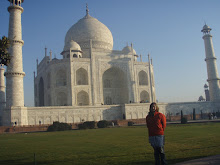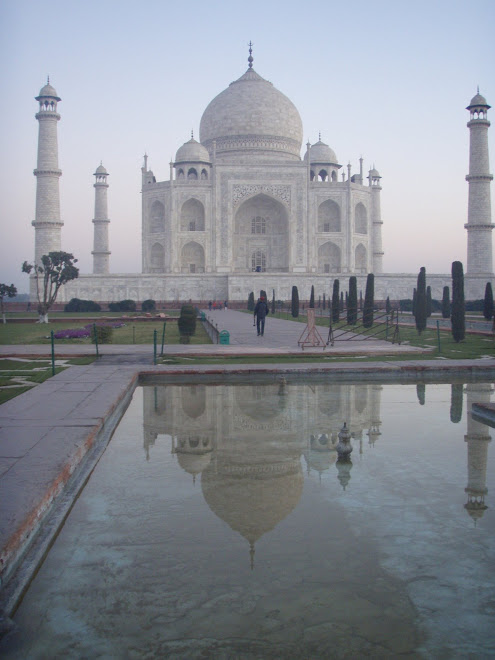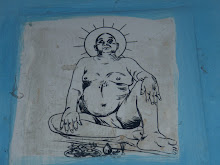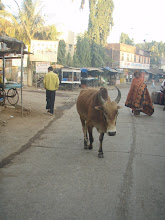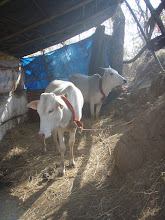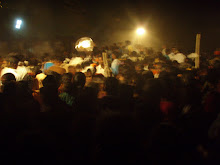A paper written for my Buddhist Ethics class @ HDS:
“…when they overturn the mind of self-power and entrust themselves to Other Power, they will attain birth in the true and fulfilled land”[1]
“compassion, equanimity, and true selflessness are available to us only prereflectively”[2]
“goodness comes through me, not because of me”[3]
In exploring the possibility of a Buddhist Ethics[4], the category of a Moral Self Degree Zero functions as an anchor that roots the ethical life in a “not-I” source. By taking examples from two different Buddhist worlds, Jōdo Shinshū and Zen, it is possible to see that although conceptions of agency differ, the ideal source of action exists prior to the realm of human agency. Action is that which is the mark of the human being in the world. The term compassion is often used when describing such action that we deem ethical. Investigating the elementary forms of the self as a moral being acting compassionately from these two Buddhist perspectives results in a new understanding of what it is to be a human being, and hence can be extremely useful when navigating the Zero Degree of the moral self and of the moral life.
Turning first to the words of Shinran, the founder of Jōdo Shinshū, that are recorded in the Tannisho, the Moral Self Degree Zero (henceforth MSDZ) is illuminated by three key terms which are integrally interrelated: the nembutsu, the Vow, and Other Power. The nembutsu is both dependent upon and expressive of the Vow, which is a promise of Other Power. Yet,
“the nembustu, for its practicers, is not a practice or a good act. Since it is not preformed out of one’s own designs, it is not a practice. Since it is not done through one’s own calculation, it is not a good act. Because it arises wholly from Other Power and is free of self-power, for the practicer, it is not a practice or a good act.”[5]
This quote points to the core of an ethics derived from reading Tannisho: the nembutsu alone acts and does not discriminate. It is important to note here that the nembutsu has a multifaceted meaning and function. Practicers say the nembutsu millions of times, however it takes only one recitation of the nembutsu to be saved and born in the Pure Land. This one ‘true’ recitation of the nembutsu results in shinjin, the simultaneous realization that I, as a being in the world, am completely incapable of doing anything yet at the same time I find that everything is already done. Perfection is born out of utter despair. Yet for Shinran, this perfection can only be due to the benevolence of Amida, working through the Vow: “the inconceivable working of the Vow and that of the Name are one, with no distinction whatever”[6]. The millions of recitations that come after shinjin are to be “recognized as entirely the expression of our gratitude for the benevolence and our thankfulness for the virtuous working of the Tathagata’s great compassion”[7]. By saying the nembutsu, the Vow is capable of saving the “person whose karmic evil is deep and grave and whose blind passions abound”[8]. The person need only accept and entrust themselves to the Vow.
The Tannisho states that taking refuge in the Vow by saying the nembutsu is the only way that a human being may realize true or complete compassion[9]. Hence, the vision of the MSDZ that is seen in Tannisho does not allow for agency on the part of the individual. Thinking that one has agency is itself part of the problem, according to Shinran, as at the moment we realize that we have no true control over our lives we simultaneously realize that everything in our lives, including birth in the Pure Land, is settled. Furthermore, karma also has a significant role, encouraging some actions and discouraging others: “it is not that you do not kill because your heart is good…if the karmic cause so prompts us, we will commit any kind of act”[10]. The Moral Self can only let the nembutsu do its work: “concerning the nembutsu, no working is true working”[11] because “the nembutsu alone is true and real”[12]. By getting oneself out of the way of the power of the Vow, compassion may be expressed in the world.
Now in turning to Kasulis’ discussion of Zen Buddhism, we see that the sense of individual agency is different. As mentioned above, the moral self in this essay is being understood in relation to agency, whereas the moral life (as explained below) will be understood in relation to action or expression. The understanding of agency in Kasulis’ reading of Dogen is quite different from that of Shinran. Here, the individual takes responsibility for their state of being[13], actively cultivating a mind which can exist in ‘without-thinking’[14]. For Dogen, Zazen is the “Dharma gate of repose and bliss, the cultivation-authentication of totally culminated enlightenment. It is the presence of things as they are”[15]. Even though one must put forth effort in Zazen, it is not creative or productive effort. Rather, we are to “regain our grasp of the present moment as it is being experienced”[16] so we can authenticate the enlightenment which is already there[17]. This requires dissolution and unlearning of conceptual categories that inherently filter our experience, however the process by which one may accomplish this (zazen) is not straightforward: “to become directly aware of impermanence, to achieve without-thinking, it itself a paradox in that it requires an attempt to do what must not be willfully attempted”[18]. For Dogen, both zazen and without-thinking exist within the realm of prereflective experience, and it is here that will has no function: “in zazen…presence itself is the sole content: without-thinking has no desired focus”[19]. Awareness of awareness itself is all that remains.
The MSDZ then, in Zen Buddhism, hinges upon the without-thinking state, in which the “distinction between self and other is not directly experienced…[because] there is no self or other”[20]. All that is, is pure, prereflective experience. It is from this space that a Moral Self acts, but the only acts are responses to the present experience. Without conceptual frameworks that can direct and form the action, the only action from such a space is spontaneous and unmediated, and naturally compassionate[21].
By looking at these two views of the MSDZ it is clear that diametrically opposed traditions that understand agency in very different ways are still pointing to a MSDZ which recognizes the inability of the human being to be the true moral actor. In Tannisho we saw that the only thing that is actually real is the nembutsu, and there is a relinquishing of self-power to the Other Power of the Vow, which alone has the capacity to save. In Kasulis’ exposition of Zen we saw that the elementary form of the moral self is actually no-self – only the prereflective awareness which is present in the without-thinking state and is cultivated (to a certain extent) by self-power. What emerges from these actor-less places is spontaneous compassion, and I think that when seeking insight on the Moral Life Degree Zero, the similarities are more important than the differences because they point us towards something that is perhaps more accessible to more people.
How then, does such an understanding of the MSDZ influence the Moral Life Degree Zero? (Henceforth, MLDZ) What is the most significant aspect of these two visions is that the self has to get out of the way either for the Other Power to take over (Shinran) or for what is already perfect to be realized (Dogen). Even though these two religious thinkers differer in just how the self gets out of the way, practice itself is an element. For Shinran, you have to at least say the Name with faith, and for Dogen one must practice zazen. On an even more basic level, the MSDZ must relinquish agency so that it can be as it is. The MLDZ is the way in which the MSDZ is in the world. This is takes the form of spontaneous response to what is. In both visions, it is impossible to know just what the ‘right’ action is for any given circumstance[22], so the only appropriate response is spontaneous. It comes from the prereflective state, a state that is prior to what it is to be human. Yet because it is through the human that this spontaneity emerges, we can say that it is a fundamental aspect of what it is to be human. Furthermore, the quality of this spontaneity in its pure form is compassionate. The MLDZ is therefore fundamentally compassionate, but is only accessible when the MSDZ relinquishes agency and exists as awareness.
[1] Tannisho from the Collected Works of Shinran (Chapter 3)
[2] Kasulis, Zen Action/Zen Person p.98
[3] class notes from 9.16
[4] Or, Ethics of ‘Buddhisms’.
[5] Tannisho, Chapter 8
[6] Tannisho Chapter 11. See also: “no evil can obstruct the working of Amida’s Primal Vow” (Chapter 1)
[7] Tannisho, Chapter 14
[8] Tannisho, Chapter 1
[9] Tannisho Chapter 4: “it is hard to save others as we wish; hence, such compassion remains unfulfilled. Only the saying of the nembutsu, then, is the mind of great compassion that is thoroughgoing.”
[10] Tannisho Chapter 13
[11] Tannisho Chapter 10
[12] Tannisho Postscript
[13] Kasulis, p. 56: “there is … no salvation outside ourselves.”
[14] Kasulis, p. 101: “The more one practices zazen, the more aware on is of the quiescence of without-thinking and the more readily one returns to it even when not sitting.”
[15] Kasulis, p. 71
[16] Kasulis, p. 57
[17] Kasulis, p. 78
[18] Kasulis, p. 84
[19] Kasulis, p. 89
[20] Kasulis, p. 92
[21] Kasulis, p. 98: “Only after distinctions are introduced is that urge thwarted. Thinking not only fails to grasp the true nature of prereflective compassion; it often obstructs the expression of compassion.”
[22] The reasons differ according to teacher: Shinran says this is impossible because we are evil beings mired in blind passion. Dogen says this is impossible because thinking “obstructs the expression of compassion” (Kasulis, p. 98).
